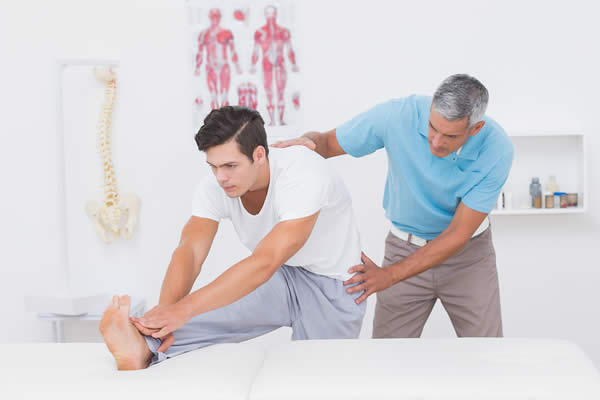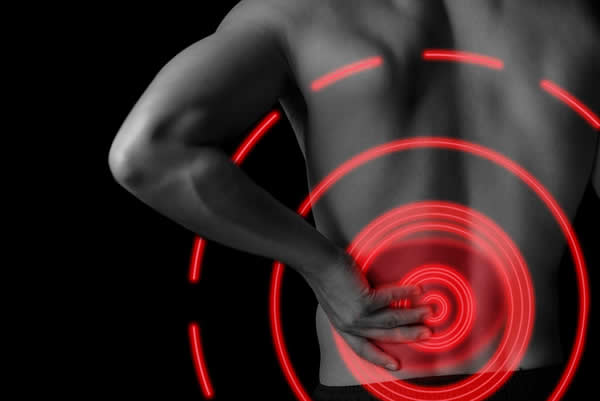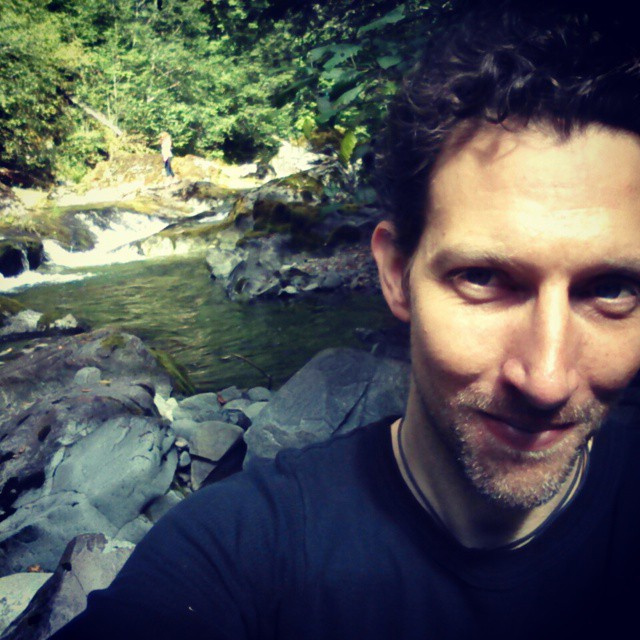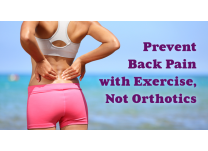Study: Shoe Orthotics Do NOT Prevent Back Pain, But Exercise Does!

Want to Stay Out of the Chiropractor's Office? It May Be Easier Than You Think...
Like many people, I've had my share of lower back pain. For me, it started way back in high school. I threw my back out playing lacrosse and spent most of my senior summer lying on a chiropractor's table while he jumped on my spine and made it pop in ways I never knew possible. By the time I left for college I felt better, but a twinge of pain was always present in my lower back and it would flare up to more serious aching from time to time. I tried a variety of shoe orthotics, lumbar supports and those funky ergonomic chairs that make you sit on your knees, but none did the trick.
Cut to a decade later. It took me that long to finally get around to seeking more help because I had long accepted that my lower back would always hurt a little (sometimes a lot). After moving to Oregon, a friend recommended a local holistic chiropractor and I figured, why not? I went through weeks of adjustments and various treatments, but one question the doc asked me at every appointment was, "Are you getting exercise?"
"Well," I'd say, "I run when it's nice out, and sometimes ride my bike to work. And I try yoga from time to time," meaning I'd try about 5 minutes of yoga once a month.
"Good," she'd respond. "Keep it up."
"Which part?"
"Any of it. All of it. Just stay active"
At the time, I didn't give much regard to her advice. I just wanted her to fix my back, not get all into my cardiovascular health. I did ended up getting a lot more exercise then because I decided to sell my car and depend on my bike for transportation—not for my health, but to save money and live more sustainably. I also took up surfing and started running more seriously (what can I say, Oregon encourages these things). And guess what... for the first time in 10 years my back pain completely disappeared!
I credited the cure to all the chiropractic treatments, but then the pain came back the following winter. I had switched to a full time sitting desk job and wasn't going outside much during our Oregon rainy season. When I returned to my chiropractor her first question was, "You're getting less exercise now, aren't you?"
Okay, I'm a little embarrassed because I like to think of myself as a sharp guy, but I have to admit that a golden retriever probably would have made the connection faster than I did. At some point, I did finally connect the dots: my back pain doesn't return when I stay active.

Yes, the chiropractic treatments tuned me up, straightened me out and relieved the pain, but it was exercise that kept the pain at bay. It wasn't even a particular exercise, but ANY regular movement seemed to do the trick for me. That was over 10 years ago. Now, pushing 40, I work at a standing desk, snowboard in the winter, surf in the summer, run year-round and haven't felt a twinge of lower back pain in a very long time.
A new study published by JAMA Internal Medicine shows just how prophetic my chiropractor actually was. Researchers analyzed over 6,000 studies on lower back pain and whittled them down to 23 studies that they deemed were "methodologically robust" to determine which preventative treatments really worked. These studies examined more than 30,000 participants with lower back pain. Treatments analyzed included education, shoe orthotics, back belts and various exercise programs—some with education about back pain and some without. To be considered successful, a prevention technique had to keep a participant free of back pain for at least a year, or reduce lost work time due to back problems.
So what did they find? Shoe orthotics did virtually NOTHING to prevent back pain from returning. Zero effect. Zilch. Diddly-squat. Same with back belts and stand-alone education. Almost everyone who relied on these methods alone had more bouts of lower back pain within 12 months.
In the end, only one treatment did prove effective. You guessed it: EXERCISE! Participants who stayed active and maintained exercise programs, with or without education about back pain, were the only ones to keep their pain at bay for a year or more. What's more... it didn't even matter what kind of exercise they did! Core strengthening was just as effective as general aerobic conditioning and balance training. Most of the "successful" participants completed 2–3 supervised workout sessions every week for at least two months.
In many cases, when the participants stopped exercising, the protective effects wore off and their back pain returned after 12 months.

We don't mean to denounce all uses of orthotic footwear, but we see this study as one more reason to consider minimal shoes that allow your body to move and strengthen naturally (or just go barefoot). This falls in line with the advice we've heard for years from experts on alignment and movement, including Movnat founder Erwan Le Corre, primal fitness guru Mark Sisson and biomechanist Katy Bowman. Time and again we meet customers who tell us their foot, knee and back pain felt better only after they ditched their orthotics and gradually transitioned to shoes that are—like ours—thin, flexible, roomy and have no cushioning or support (or just go barefoot). Repeatedly, we hear that this transition allows them to become more active, so they start getting more and more exercise and continue to feel better and better.
[See Soft Star's minimal shoes for adults]
I consider myself very fortunate to have stumbled upon the right treatment for my back pain and to be in a situation were it was easy to acquire a more active lifestyle—as well as a job that introduced me to minimal footwear. We live in a world full of modern conveniences that have made our lives much safer and easier than our ancestors', but they also make sedentary lifestyles the norm. Rather than putting patches over the patches and trying to cushion our pain with more... well, cushions... maybe foregoing some of those conveniences and spending a little more time moving around could be just what the doctor ordered. Barefoot running and minimalist shoes may not have the hype they did a few years ago, but as long as they continue to help people live healthier, happier and pain-free lives, we're confident they'll be around for a long time.
Less is more, right?
Disclaimer: I'm happy to share my experiences and the results of the study with the hope that some people will find it helpful, but I'm not a doctor and nothing written here should be taken as professional medical advice. For liability reasons, if you ask me for medical advice in the comments then I will politely recommend you consult a real doctor.
Related Posts:
- 4 Tips You Should Know About Standing Desks
- Biomechanist and Author Katy Bowman Visits Soft Star Shoes
- How to Choose Barefoot Shoes [INFOGRAPHIC]

Martin is a lifelong runner who began wearing minimalist shoes over 10 years ago when he found they alleviated his chronic foot pain, which eventually disappeared completely. He further studied proper running form through a series of workshops taught by Correct Toes inventor, Dr. Ray McClanahan DPM. Martin has collaborated with several health care professionals to collect and share peer-reviewed studies that show the benefits of minimalist footwear. In his personal life, Martin loves living in the Pacific Northwest because it allows him to enjoy a variety of outdoor activities year-round, including hiking, cycling, rock climbing, surfing and snowboarding.



1 Comment
1 Product